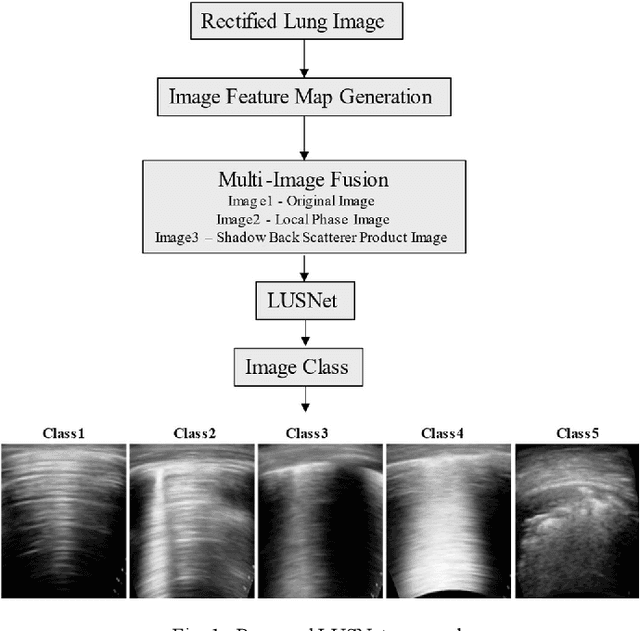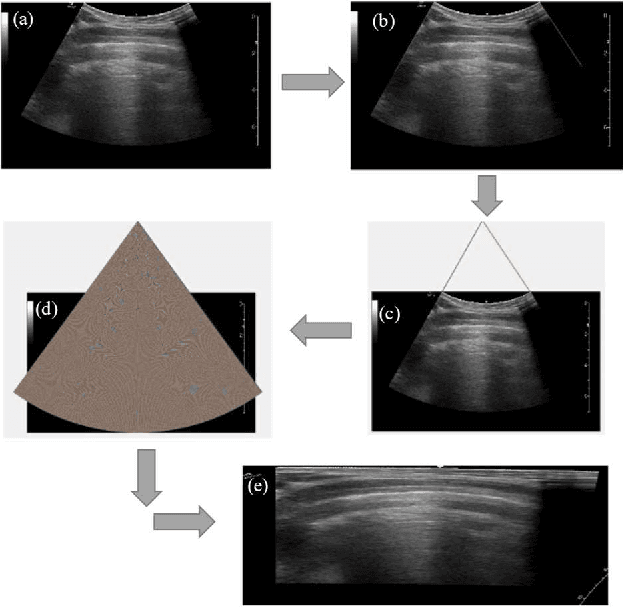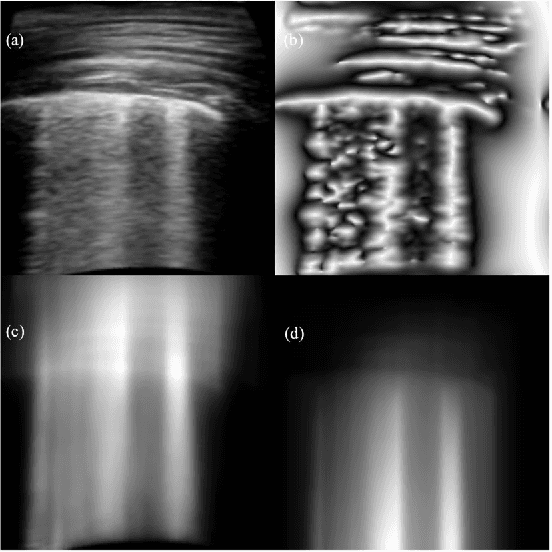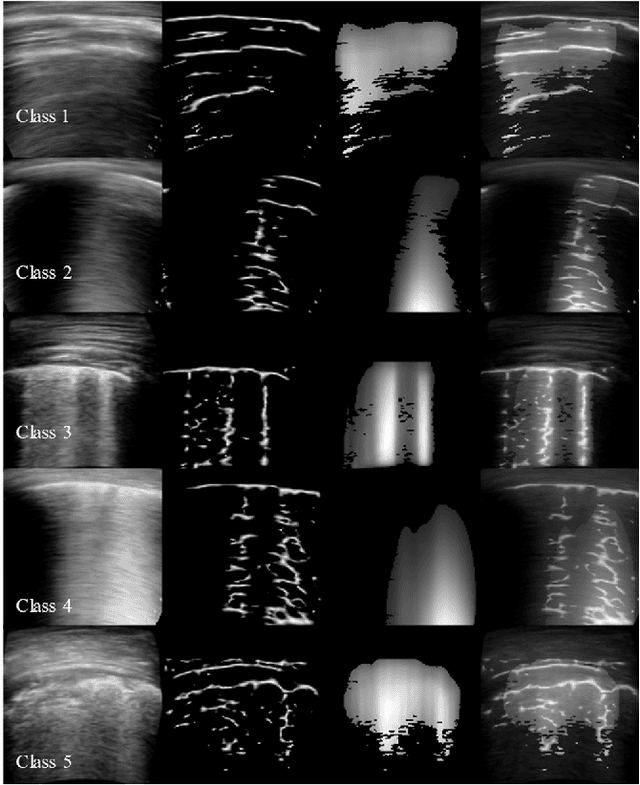C Kesavadas
An Approach Towards Physics Informed Lung Ultrasound Image Scoring Neural Network for Diagnostic Assistance in COVID-19
Jun 13, 2021



Abstract:Ultrasound is fast becoming an inevitable diagnostic tool for regular and continuous monitoring of the lung with the recent outbreak of COVID-19. In this work, a novel approach is presented to extract acoustic propagation-based features to automatically highlight the region below pleura, which is an important landmark in lung ultrasound (LUS). Subsequently, a multichannel input formed by using the acoustic physics-based feature maps is fused to train a neural network, referred to as LUSNet, to classify the LUS images into five classes of varying severity of lung infection to track the progression of COVID-19. In order to ensure that the proposed approach is agnostic to the type of acquisition, the LUSNet, which consists of a U-net architecture is trained in an unsupervised manner with the acoustic feature maps to ensure that the encoder-decoder architecture is learning features in the pleural region of interest. A novel combination of the U-net output and the U-net encoder output is employed for the classification of severity of infection in the lung. A detailed analysis of the proposed approach on LUS images over the infection to full recovery period of ten confirmed COVID-19 subjects shows an average five-fold cross-validation accuracy, sensitivity, and specificity of 97%, 93%, and 98% respectively over 5000 frames of COVID-19 videos. The analysis also shows that, when the input dataset is limited and diverse as in the case of COVID-19 pandemic, an aided effort of combining acoustic propagation-based features along with the gray scale images, as proposed in this work, improves the performance of the neural network significantly and also aids the labelling and triaging process.
 Add to Chrome
Add to Chrome Add to Firefox
Add to Firefox Add to Edge
Add to Edge